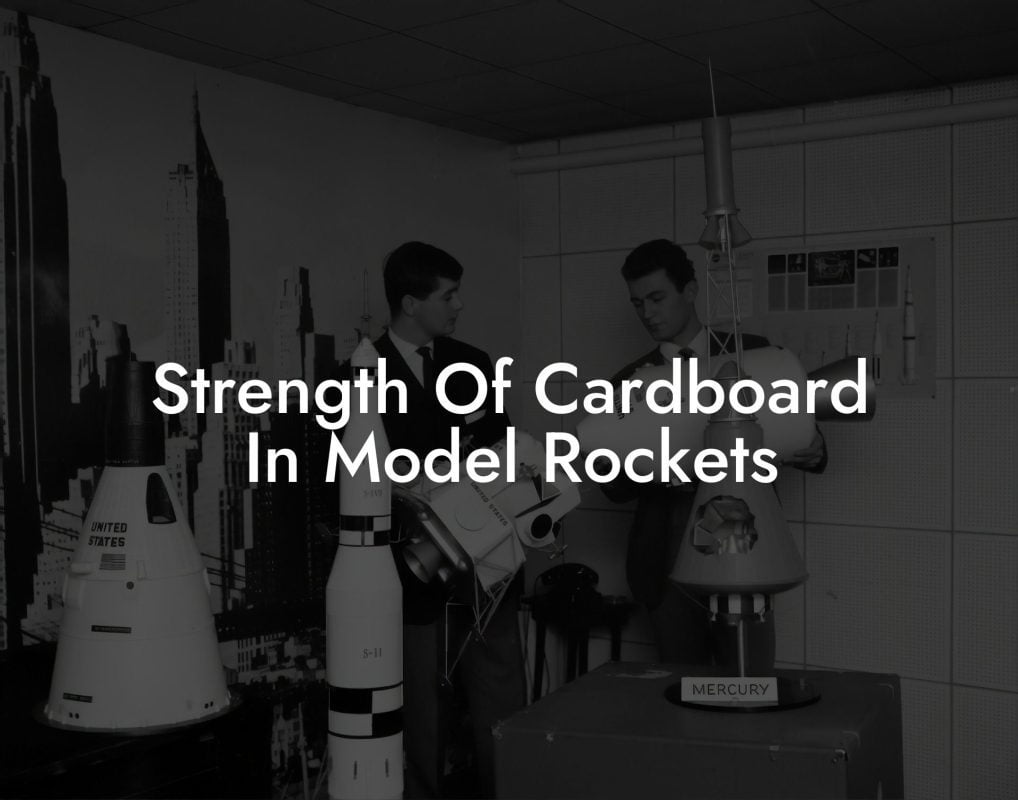Imagine soaring to new heights with your very own model rocket, leaving a trail of excitement and wonder in its wake. But have you ever wondered, just how large of a model rocket can you launch? The answer may surprise you, as it's not just about the size of the rocket, but also the skill and creativity of the builder. In this comprehensive guide, we'll explore the world of model rockets, from the smallest to the largest, and provide you with the knowledge and inspiration to take your hobby to new heights.
Quick Links to Useful Sections
- Understanding Model Rocketry: A Brief History and Overview
- The Science Behind Model Rocketry: Understanding Motors and Propulsion
- Large Model Rockets: The Ultimate Challenge for Enthusiasts
- Designing and Building Large Model Rockets: Tips and Considerations
- Launching Large Model Rockets: Safety Considerations and Best Practices
- Resources and community Support: Your Next Steps
- Frequently Asked Questions: Large Model Rockets
Understanding Model Rocketry: A Brief History and Overview
Model rocketry has a rich history dating back to the early 20th century, with pioneers like Robert Goddard and G. Harry Stine paving the way for modern enthusiasts. Today, model rocketry is a popular hobby that combines science, technology, engineering, and mathematics (STEM) with creativity and imagination. From small, backyard launches to large, competitive events, model rocketry offers something for everyone.
But before we dive into the world of large model rockets, it's essential to understand the basics of model rocketry, including the different types of rockets, motors, and safety considerations.
The Science Behind Model Rocketry: Understanding Motors and Propulsion
At the heart of every model rocket is a motor, which provides the thrust needed to propel the rocket into the air. Model rocket motors come in various sizes and types, including A, B, C, D, and E, with each larger motor producing more thrust and power.
Understanding how motors work is crucial to building and launching large model rockets. From the principles of Newton's third law to the importance of proper motor selection, we'll explore the science behind model rocket propulsion.
Looking For The Best Model Rocket Kits? You'll Love These:
Large Model Rockets: The Ultimate Challenge for Enthusiasts
So, just how large of a model rocket can you launch? The answer depends on several factors, including the type of motor, the design and construction of the rocket, and the launch site. Generally, larger model rockets require more powerful motors, specialized equipment, and careful planning.
We'll explore some of the largest model rockets ever built, including the Guinness World Record holder, and provide tips and inspiration for building your own large model rocket.
Designing and Building Large Model Rockets: Tips and Considerations
Building a large model rocket requires careful planning, precision engineering, and attention to detail. From selecting the right materials to designing a stable and aerodynamic shape, we'll cover the essential tips and considerations for building a large model rocket.
Whether you're a seasoned pro or a beginner, our expert advice will help you overcome common challenges and create a model rocket that's both impressive and safe to launch.
Launching Large Model Rockets: Safety Considerations and Best Practices
Launching a large model rocket requires careful planning, attention to detail, and a commitment to safety. From choosing the right launch site to following proper safety protocols, we'll cover the essential best practices for launching large model rockets.
Safety should always be your top priority when launching model rockets, and we'll provide you with the knowledge and resources needed to ensure a safe and successful launch.
Resources and community Support: Your Next Steps
Whether you're just starting out or an experienced model rocket enthusiast, having access to the right resources and community support is essential to success. From online forums and social media groups to local clubs and national organizations, we'll provide you with the connections and resources needed to take your model rocketry hobby to the next level.
Join the model rocketry community today and start building, launching, and exploring the world of large model rockets!
Frequently Asked Questions: Large Model Rockets
Here are some frequently asked questions about large model rockets:
1. What is the largest model rocket ever built?
The largest model rocket ever built is the "Liberty" rocket, which stood at an impressive 36 feet tall and weighed over 1,000 pounds.
2. What type of motor is needed for a large model rocket?
Large model rockets typically require high-power motors, such as H, I, J, or K motors, which produce more thrust and power than smaller motors.
3. How high can a large model rocket fly?
The altitude reached by a large model rocket depends on several factors, including the type of motor, the design and construction of the rocket, and the launch site. Some large model rockets have reached altitudes of over 10,000 feet.
4. Are large model rockets safe to launch?
Yes, large model rockets can be safe to launch if proper safety protocols are followed, including choosing the right launch site, using proper safety equipment, and following local regulations.
5. How much does it cost to build a large model rocket?
The cost of building a large model rocket can vary greatly, depending on the materials, motor, and complexity of the design. On average, a large model rocket can cost anywhere from $500 to $5,000 or more.
Looking For The Best Model Rocket Kits? You'll Love These:
Useful Interruption: Dive deeper into the world of Model Rockets with our most popular sections. If there is anything you think is missing or anything you would love for us to write about, just give us a shout.
- Getting Started & Basics With Model Rockets
- Model Rocket Design, Build & Customization
- Model Rocket Propulsion & Engine Technology
- Model Rocket Launch Techniques & Recovery
- Model Rocket Advanced Rocketry & Innovations
- Model Rocket DIY and Customization
- Model Rocket Equipment Reviews & Digital Tools
- Community, Competitions & Education
- Model Rocket Troubleshooting & FAQs
- Model Rocket Bonus/Seasonal & Niche Topics
A group of model rocket enthusiasts gathered at a field for their weekly launch event. Among them was Dave, a seasoned builder known for pushing the limits of hobby rocketry. This time, he had outdone himself.
“Ladies and gentlemen,” Dave announced, dramatically pulling a cloth off his latest creation, “I present to you: The Kraken!”
The crowd gasped. This wasn’t just a model rocket—it was a monster. The thing stood 8 feet tall, had six clustered engines, and was covered in enough duct tape to qualify as a classified aerospace project.
“Dave,” muttered Steve, the cautious safety officer, “Have you, uh… done the math on this?”
“Math?” Dave scoffed. “I built it in my garage at 3 a.m. with parts from eBay. This is an art piece, Steve.”
The countdown began.
5…
4…
3…
2…
1…
The engines ignited with a BOOM, and The Kraken shot up… kind of. It immediately did a violent barrel roll, narrowly missing the spectators before skyrocketing at an angle that could only be described as “legally questionable.”
The crowd collectively ducked as The Kraken flew straight over the adjacent cornfield, where Old Man Jenkins, the grumpiest farmer in town, was minding his business.
KABOOM!
The rocket disappeared behind the barn. A moment later, a flaming piece of Estes igniter wire landed at Steve’s feet. The silence was deafening.
And then—an unmistakable sound echoed across the field.
Jenkins’ shotgun being cocked.
“DAVE!!!” Steve shouted. “RUN.”
And that was the day Dave invented the first-ever biologically powered rocket booster: pure adrenaline.
To this day, nobody knows where The Kraken landed, but legend has it, it still haunts the skies, terrifying unsuspecting drones and low-flying birds.















